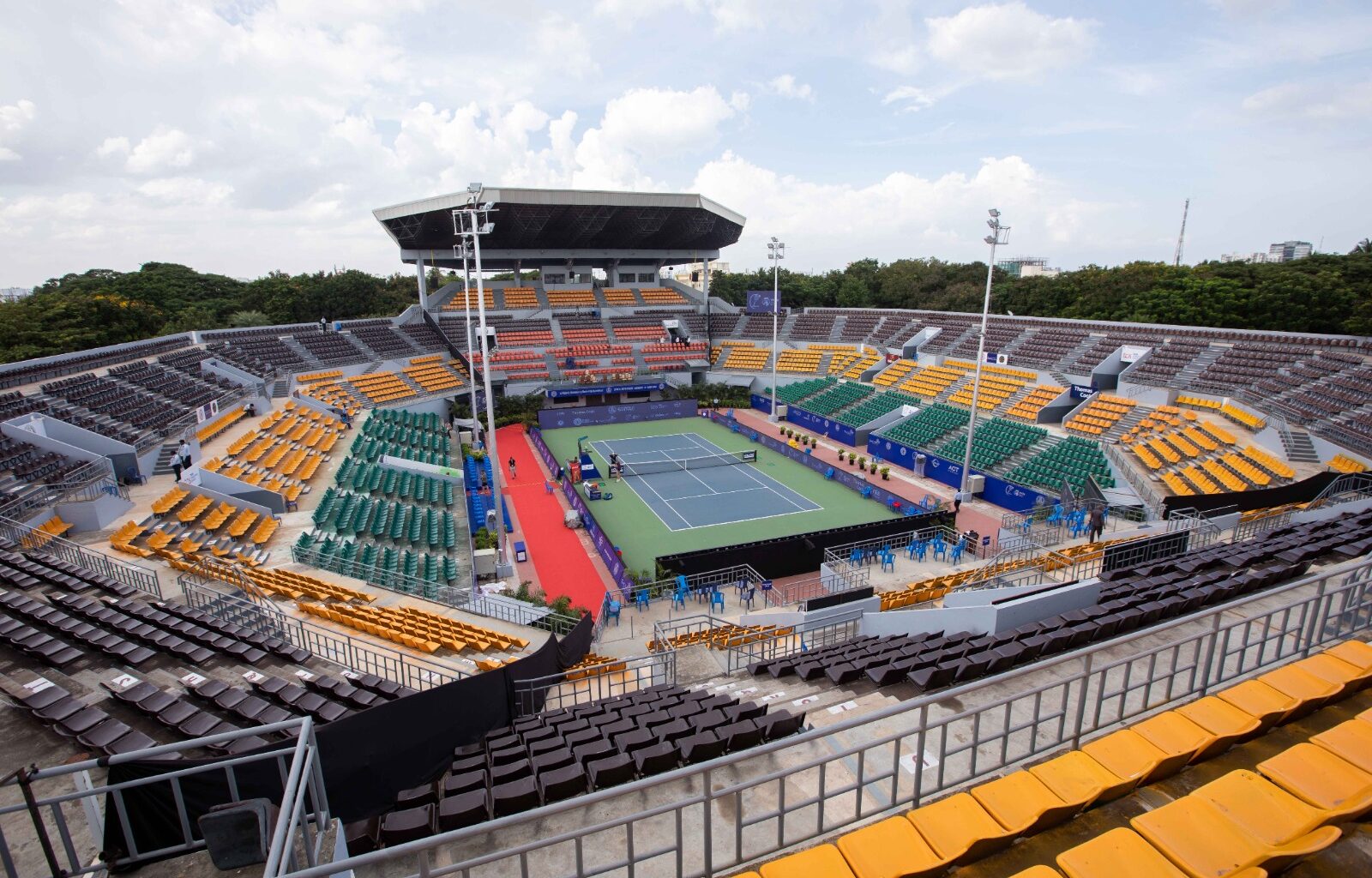Three years after the inaugural WTA Chennai Open was held, the second edition of the WTA 250 event wraps up Sunday. Players, fans and the wider tennis community in India will be hoping they won’t have to wait that long again for the WTA Tour to return.
It’s been a whirlwind week in one of the most tennis-centric cities in the world’s second most populous nation. After rain wiped out the first two days, the tournament quickly got back on track to deliver high-quality tennis and excitement over five days, culminating in Sunday’s final between Janice Tjen of Indonesia and Kimberley Birrell of Australia.
For some, the impact of hosting a WTA 250 event at home is immediate. Four Indian women — Sahaja Yamalapalli, Shrivalli Bhamidipaty, Maaya Rajeshwaran Revathi and Vaishnavi Adkar — earned their first-ever main draw appearances at a WTA 250 tournament. Yamalapalli and Bhamidipaty, the country’s top two ranked players, each won a round, earning valuable points that will boost their rankings as early as Monday.
2006 Sony Ericsson Bangalore Open
🇮🇳 Sania Mirza & 🇮🇳 Isha Lakhani
2025 Chennai Open
🇮🇳 Sahaja Yamalapalli & 🇮🇳 Shrivalli Bhamidipaty
📸 Chenthil Mohan pic.twitter.com/xnMmb9gScs
— Indian Tennis Daily (ITD) (@IndTennisDaily) October 29, 2025
“A WTA 250 at home is a huge opportunity for Indian players,” Bhamidipaty told the WTA Tour. “We get to compete against top-athletes without spending on travel or visas, and that exposure is priceless. It gives us a real chance to earn ranking points, learn from higher-ranked opponents, and show what we can do on a big stage. It also inspires younger players and proves that world-class tennis can grow in India.”
Playing at home also eases the financial strain on athletes, as Indian veteran Ankita Raina pointed out. “The biggest impact I feel will be the financial burden is taken off when we have more of these events in India because then don’t need to be abroad so many weeks. You are at home so used to the conditions and have crowd support. Also, the points are really good so even if you win couple matches you get good jump in the rankings and prize money wise as well.”
Another major benefit of competing at home is the support of local fans — a luxury that players from established tennis nations may take for granted. The support and encouragement, even after a loss, can be uplifting for players.
“Playing in front of the whole crowd in Chennai has definitely been great,” said 16-year-old Maaya Rajeshwaran Revathi, one of the brightest young prospects in Indian tennis. “The support, the people, the place, everyone cheering me up. Even when I lost, they were like, well-fought, it’s good and all of that. And I think that’s a very motivating thing to see. Especially, when you’re not at your best, when you’re not able to do well, people still being there for you, having your back, it’s really nice and this is something that I will never forget.”
But it’s not just the players who benefit. The entire tennis ecosystem in the country gets a boost, as Yamalapalli noted. “I think such events raise overall standard of the sport in the country. It brings more awareness and creates more visibility for women’s tennis in India and I think it also inspires many younger players to pursue the game professionally because they get inspired by watching all these athletes and us Indian players playing and competing at this level. So it ultimately strengthens the entire tennis ecosystem in India from players to coaches, sponsors and fans.”
There are also longer-term benefits, the impact of which will be seen over time. Twenty-nine-year-old Rutuja Bhosale, whose semifinal run in the doubles event earned her enough points to become the new India No. 1 in doubles, believes hosting such events inspires kids to take up the sport and creates a pathway to the global stage.
“These events play a major role in inspiring the next generation,” Bhosale said. “When children and families come out to watch world-class tennis live, it creates excitement and curiosity about the sport. Seeing Indian players compete alongside top international names motivates young kids to pick up a racket and dream big. In the long run, hosting more tournaments helps build a stronger tennis culture in the country. It draws more investment into the sport, improves infrastructure, and provides a platform for local talent to shine. Ultimately, it’s not just about one event — it’s about creating a pathway that supports Indian tennis players from the grassroots to the global stage.”
As dusk settles over the SDAT Stadium, the echoes of Chennai’s cheers linger — not just for the champions, but for the promise of what’s to come. This week wasn’t merely about forehands and finals; it was about rekindling belief that Indian tennis can dream bigger, play bolder, and host the world again — sooner, not later.

